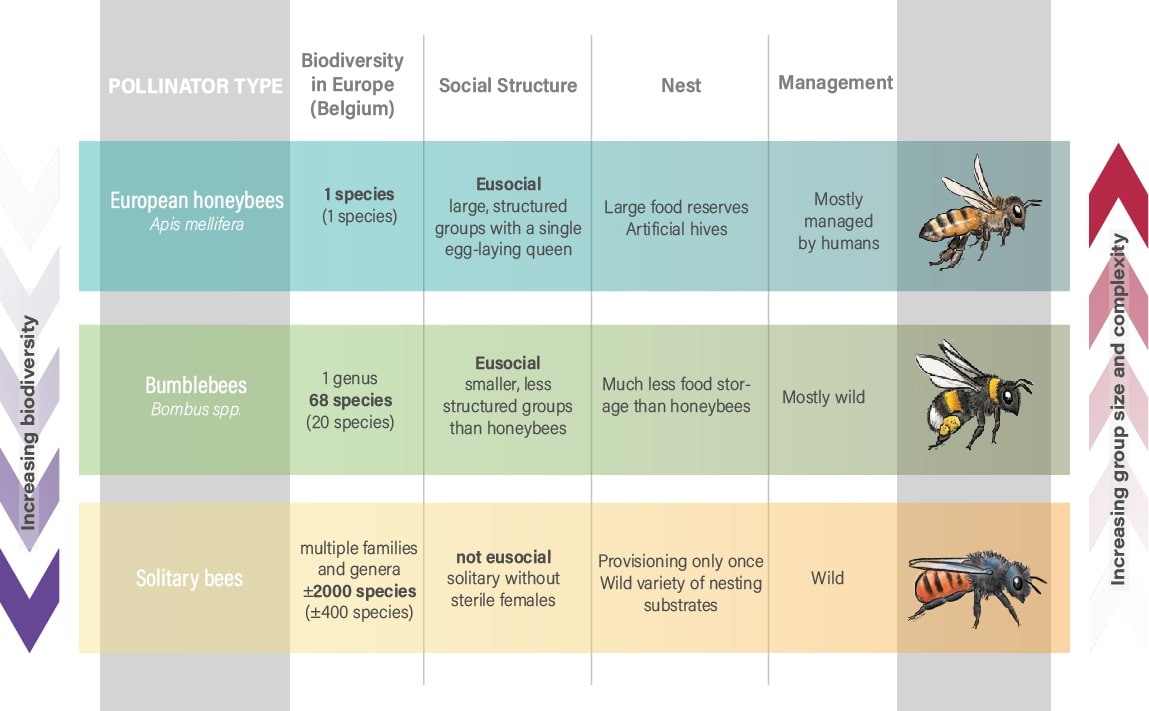Bees
The use of plant protection products may create a risk for bees and other pollinating insects which come into contact with treated crops or the surrounding plants (weeds or neighbouring crops). Plant protection products, for example neonicotinoids, can affect the survival and behaviour of bees.
The impact on bees is assessed in the context of the authorisation of plant protection products. To reduce this impact, risk mitigation measures must be applied by the users of certain products. The basis for the risk assessment for bees in Belgium is the EFSA guidance document. This EFSA guidance document for bees is currently under revision. For more information on this revision, please check our FAQ. How this evaluation is specifically done in Belgium, can be found in this document.
Measures to protect bees
The risk mitigation measures of each product, if necessary, are indicated on the label of the packaging of the plant protection product. Below are some examples of the risk phrases:
- Dangerous to bees and other pollinating insects. To protect bees and other pollinating insects do not apply to crop plants when in flower. Do not apply when flowering weeds are present.
- Dangerous to bees and other pollinating insects. To protect bees and other pollinating insects do not apply to crop plants when in flower. Do not use where bees are actively foraging. The product must therefore be applied early in the morning or late in the evening.
- Dangerous to bees and other pollinating insects. Remove or cover beehives during application and for (state time) after treatment.
Possible exposure pathways
Note: 'non-Apis' refers to bumblebees and solitary bees
Bees can be exposed to a plant protection product in various ways. The figure above illustrates all known pathways by which a bee can be exposed to a plant protection product, during and after application in the field.
Bees are usually divided into three main groups, which have different natural behaviour (see also the table below):
- Honey bees: This 'group' includes only one species, namely Apis mellifera. Honey bees live together in large colonies (thousands to tens of thousands of bees) in a hive. Although wild colonies do occur, honey bees in Europe are primarily a domesticated species, making their nests in artificial hives.
- Bumblebees: This group includes all species of the genus Bombus. There are around twenty species of these in Belgium, of which Bombus terrestris is the most well-known. This species is also bred commercially for use as a pollinator in crops, but most species are only found in the wild. Bumblebees live together in smaller colonies (dozens to several hundred bees), with one queen. Unlike honeybees, a bumblebee colony does not hibernate, but dies off at the end of the summer. Only the (new generation) queens hibernate; they will start a new colony the next spring. The nests of bumblebees can be located both above ground (e.g. in a tree hollow) and below ground.
- Solitary bees: This group is the most diverse from a taxonomical perspective, comprising around 400 species in Belgium. Although a limited number of species are bred (e.g. Osmia bicornis), most species live in the wild. Solitary bees mainly live alone. The species vary greatly in size, and can use a variety of materials to make their nests (e.g. mud, wood, leaves and other plant material).
The various exposure pathways shown in the figure apply to these three groups, although to a greater or lesser extent depending on the group. For example, exposure through the soil may occur for bumblebees and solitary bees, as they can make their nest there, but this route is not relevant for honeybees.
Illustrations Carolina Levicek, table design adapted by Marlies Van Der Meiren from Freepik
Plant protection products are not the only threats bees face in agricultural landscapes, there are also (natural) diseases and parasites, pesticides used in beekeeping, fertilizers, exotic invasive species, climate change and habitat fragmentation and reduction.

